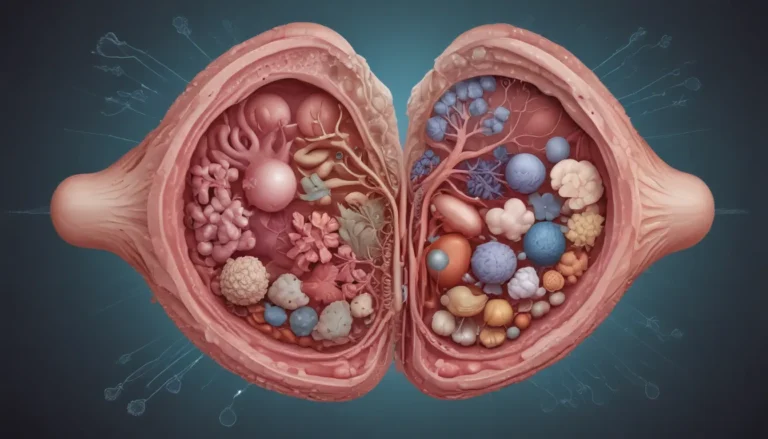A Note About Images: The images used in our articles are for illustration purposes only and may not exactly match the content. They are meant to engage readers, but the text should be relied upon for accurate information.
In the intricate web of biogeochemical cycles that sustain life on Earth, the phosphorus cycle emerges as a pivotal player. Essential for all living organisms, phosphorus weaves its way through rocks, soil, water, plants, and animals, orchestrating a delicate dance that supports the very fabric of life. Unraveling the mysteries of this vital cycle unveils not only its profound influence on the environment but also underscores the importance of efficient management and conservation practices. Join us on a journey to discover eight extraordinary facts about the phosphorus cycle, shedding light on its profound significance in preserving life on our planet.
Key Takeaways:
- Phosphorus is a fundamental element for all life forms, playing a crucial role in DNA, RNA, and ATP, essential for cellular processes. Sustainable phosphorus management is critical to mitigate the impact of human activities on the environment.
- Wetlands act as natural purifiers, effectively removing excess phosphorus from water bodies and safeguarding aquatic ecosystems. Understanding and safeguarding the phosphorus cycle is vital for environmental health.
Phosphorus: The Lifeblood of Living Organisms
At the core of the phosphorus cycle lies the indispensable nutrient phosphorus, a cornerstone of DNA, RNA, and ATP, pivotal for cellular functions and energy transfer. Moreover, phosphorus serves as a primary building block in bones, teeth, and marine shells, emphasizing its irreplaceable role in the biological realm.
The Dance of Phosphorus: Biotic and Abiotic Interplay
The phosphorus cycle commences with the weathering of rocks, liberating phosphorus into the soil. Plants absorb this essential nutrient through their roots, passing it along the food chain to animals. Subsequently, phosphorus returns to the soil through decomposition and excretion, perpetuating the cycle of life.
The Conundrum of Phosphorus Scarcity in Ecosystems
Despite its abundance in the Earth’s crust, phosphorus often exists in inaccessible forms, posing a challenge for organisms, particularly in freshwater and marine ecosystems. This scarcity can impede growth and hinder ecosystem balance, highlighting the delicate equilibrium of nutrient availability.
Human Footprints on the Phosphorus Cycle
Human activities, such as fertilizer application, industrial runoff, and wastewater discharge, have disrupted the phosphorus cycle, leading to an overabundance of phosphorus in water bodies. This influx culminates in eutrophication and harmful algal blooms, underscoring the imperative of sustainable phosphorus management practices.
The Promise of Phosphorus Recycling and Reuse
Embracing efficient management strategies, such as phosphorus recovery from wastewater and adopting sustainable agricultural techniques, presents a pathway to reduce reliance on mined phosphorus and curtail environmental repercussions. By fostering phosphorus recycling, we pave the way for environmentally conscious practices.
Global Impact, Local Repercussions of the Phosphorus Cycle
While the phosphorus cycle exerts a fundamental influence on Earth’s ecosystem functionality, it also manifests local effects on soil and water phosphorus availability, directly shaping agricultural productivity. Recognizing the dynamic interplay between global processes and local ramifications underscores the multifaceted nature of the phosphorus cycle.
Wetlands: Guardians of Phosphorus Cycling
Wetlands emerge as pivotal players in the phosphorus cycle, acting as natural filters that extract excess phosphorus from water bodies, safeguarding aquatic ecosystems from detrimental effects. Their role in maintaining phosphorus equilibrium underscores the vital importance of wetland conservation.
Climate Change: A Disruptor of the Phosphorus Balance
The intricate balance of the phosphorus cycle faces potential upheaval in the wake of climate change-induced alterations in precipitation patterns, temperature shifts, and runoff dynamics. These changes can disrupt phosphorus transport and availability, underscoring the interconnectedness of environmental processes.
Embarking on a journey through the intricacies of the phosphorus cycle unveils its profound significance in upholding life on Earth. By delving into the extraordinary facets of this essential process, we garner a deeper appreciation for the intricate web of interactions that sustain the planet’s ecosystems. Through conservation and sustainable practices, we can safeguard the phosphorus cycle for future generations, ensuring a resilient and balanced environment.
Conclusion: Nurturing the Lifeline of the Phosphorus Cycle
In conclusion, the phosphorus cycle stands as a testament to the intricate interplay of biotic and abiotic processes that underpin life on Earth. From its origins in ancient rocks to its integration into the food chain, phosphorus sustains a delicate balance that supports the growth of plants and animals. Understanding and preserving the phosphorus cycle are paramount for environmental stewardship and sustainable agriculture practices. By recognizing the nuances of phosphorus movement and the factors influencing its availability, we can forge a path towards responsible resource management and ecosystem preservation.
FAQs: Unveiling Insights Into the Phosphorus Cycle
What is the phosphorus cycle?
The phosphorus cycle delineates the intricate movement and transformation of phosphorus through various biogeochemical processes within the environment. It encompasses the transfer of phosphorus from rocks and minerals to soil, water, plants, and animals.
Why is the phosphorus cycle important?
The phosphorus cycle is vital for the growth and vitality of living organisms. Serving as a cornerstone of DNA, RNA, and ATP production, phosphorus plays a pivotal role in cellular processes and overall biological function. Additionally, it contributes to plant nutrition as a constituent of fertilizers.
How does phosphorus enter the environment?
Phosphorus infiltrates the environment through natural mechanisms such as weathering and erosion, as well as human activities like agricultural runoff and wastewater discharge. It can also be released into the atmosphere through volcanic eruptions and forest fires.
What are the primary reservoirs of phosphorus?
The main reservoirs of phosphorus encompass sedimentary rocks, oceanic deposits, and soil, storing substantial quantities of phosphorus over extended periods. These reservoirs slowly release phosphorus back into the environment through processes like weathering and erosion.
How do plants access phosphorus?
Plants primarily acquire phosphorus through their root systems, absorbing dissolved phosphate ions from the soil. These ions are subsequently transported throughout the plant, facilitating growth, reproduction, and other essential metabolic functions.
How does phosphorus traverse the food chain?
Phosphorus navigates through the food chain as plants are consumed by herbivores, which, in turn, become prey for carnivores. Organic phosphorus is broken down through decomposition and reintegrated into the environment, fostering a cycle of nutrient recycling.
What are the potential repercussions of disruptions in the phosphorus cycle?
Disruptions in the phosphorus cycle can instigate nutrient imbalances, water contamination, and ecosystem deterioration. Excessive phosphorus runoff from agricultural practices can trigger algal blooms, oxygen depletion, and ecological harm.
How can we sustainably manage the phosphorus cycle?
Sustainable phosphorus management entails practicing responsible agriculture, minimizing nutrient runoff, and implementing water treatment methodologies to mitigate phosphorus pollution. Promoting efficient phosphorus recycling and exploring alternative phosphorus sources are crucial steps in reducing dependence on non-renewable phosphate deposits.
Delve deeper into the captivating world of Earth’s biogeochemical cycles, unraveling the intricate processes that shape our planet’s ecosystems. Explore the interconnectedness of environmental science and conservation biology, unveiling the wondrous mechanisms that sustain diverse habitats. Embrace the curiosity that drives exploration and learning, unlocking the marvels of the natural world that surrounds us.
Was this article helpful?
At the core of our mission lies a dedication to delivering engaging and reliable content that enriches and informs our readers. Each nugget of information on our platform is contributed by individuals like you, infusing a tapestry of diverse perspectives and expertise. Our meticulous editorial team ensures the accuracy and authenticity of every fact shared, ensuring that our readers receive not only fascinating insights but also trustworthy information. Trust in our commitment to quality and authenticity as we embark on a journey of discovery and learning together.






